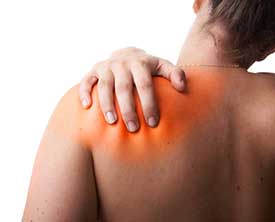Cartilage Tear Treatment in North Hollywood,CA

Are you unable to straighten or bend a bodily joint? Does it feel painful, tender, or stiff? If so, you likely have experienced a cartilage tear. While resting your affected joint may improve your symptoms, it's a temporary fix. Those symptoms will return with any new physical activity. Unfortunately, cartilage cannot repair itself or regrow on its own.
For younger people, accidents and sports injuries are the most common cause, but for the elderly, the cartilage becomes brittle and breaks down more easily with age, causing tears. Cartilage tears can occur in any joint in your body, and they are the most common cause of leg pain in physically active people.
Diagnosing a Cartilage Tear
To diagnose a cartilage tear, your doctor or orthopedist will do the following:
- Examine your affected joint and attempt to manipulate your joint.
- Order you an X-ray, MRI, or both.
Torn Cartilage in the Knee
There are two types of cartilage tears that can occur in the knee area. They are as follows:
- Articular cartilage tears: This is the cartilage covering the ends of your leg bones in the joint. This is known as a chondral injury. If the underlying bone is also involved, it's called an osteochondral injury. Left untreated, this can cause you to experience early osteoarthritis.
- Meniscal cartilage tears: Each of your knee joints has inner (lateral) and outer (medial) meniscus cartilage, which act as shock absorbers to your knee. Because there is not a good blood supply to this area, it does not heal well when torn. However, meniscal injury symptoms often minimize on their own after six weeks, especially if they are small tears. These symptoms will likely re-emerge up over time until the tear is actually treated. In some cases, physiotherapy can strengthen the quadriceps and hamstring muscles to support the knee structure.
Torn Cartilage in the Hip
- Hip labral tear: A hip labral tear means the labrum, or cartilage rim surrounding the outside rim of your hip socket, has torn. This area is the gasket holding your thighbone in place within your hip socket. If nonsteroidal anti-inflammatory drugs (NSAIDs) do not relieve your pain, a corticosteroid injection in the hip joint is the next option. If these treatments do not work, arthroscopic surgery would be recommended.
Torn Cartilage in the Shoulder
- Shoulder labral tear: Tearing the rubbery tissue (fibrocartilage) surrounding your shoulder socket can be caused by everything from sports injuries to old age. This type of injury is actually hard to diagnose. If an MRI doesn't provide you with a definite diagnosis, an arthroscopic exploratory surgery may be necessary. Depending on the severity of your injury, solutions can range from restricted motion, physical rest, or surgery.
Repairing Torn Cartilage
There are several surgical options for treatment of torn cartilage. Treatment depends on the joint involved, the type of cartilage injured and character of the tear. Your healthcare provider will help you to select the most appropriate treatment. Common approaches to repairing torn cartilage include:
- For the knee: There is a fairly new procedure called autologous chondrocyte implantation (ACI), which involves implanting your own healthy cartilage cells into your damaged cartilage area. The implanted cells create hyaline-like cartilage similar to your normal cartilage, which can reduce pain and improve your knee function.
- For the knee, hip or shoulder: Arthroscopic surgery, which means removing or repairing your torn pieces of cartilage.
Request more information about cartilage tears and repairs today. Call (424) 365-1800 or contact Vitality Integrative Medicine online.
Vitality Integrative Medicine
Address
4849 Van Nuys BlvdSuite 104
Sherman Oaks, CA 91403
(424) 365-1800
www.vitalityintegrative.com
Hours
Mon:
8:00 am - 6:00 pm
Tue:
8:00 am - 6:00 pm
Wed:
8:00 am - 6:00 pm
Thu:
8:00 am - 6:00 pm
Fri:
8:00 am - 6:00 pm
Sat:
8:00 am - 12:00 pm
